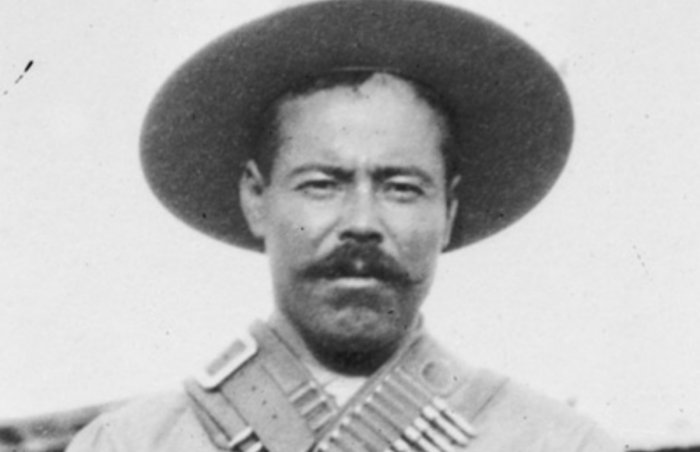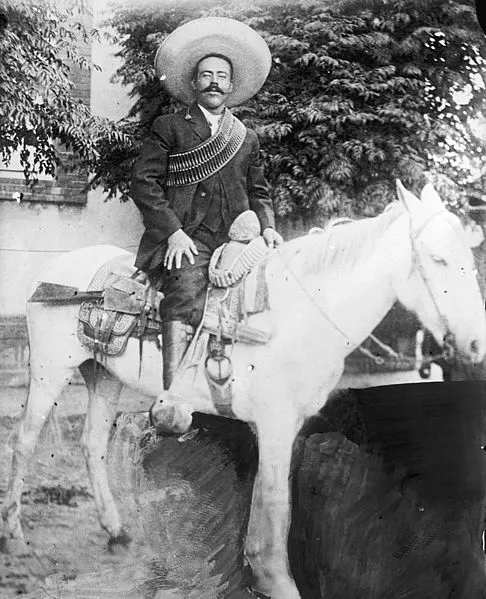Pancho Villa – Mexico’s Robin Hood – A Ruthless Bandit Or A Hero?
Ellen Lloyd - AncientPages.com - Some admired and called him a hero, but some said he was a brutal bandit and cold-blooded murderer. His charisma, extraordinary leadership skills, and courage gave him legendary status, and there is no doubt he made an impression on those he met.
Nevertheless, certain parts of his life are still shrouded in mystery, and Pancho Villa's story fascinates the modern world.
Pancho Villa (1878 - 1923). Credit: Public Domain
No one really knows how everything started, and there is conflicting information about Pacho Villa's early life. Still, it seems sad and tragic events forced Pancho Villa to take matters into his own hands and fight for justice. Like everyone, Pancho Villa had a choice, so he sought revenge on those who had caused him pain in his early life.
Who Was Pancho Villa?
Born on 5 June 1878 and named José Doroteo Arango Arámbula at birth, Pancho Villa became a bandit at a young age. He grew up at the Rancho de la Coyotada in Durango, northwest Mexico. As a young boy, he had not much time for education. After his father's death, Panchi Villa had to quit his studies at the local church-run school and help his mother.
When Pancho Villa was only sixteen, he shot Agustín Lopez Negrete, a hacienda owner who had raped his sister. Later, he stole a horse and fled to Durango's Sierra Madre Occidental region, where he roamed the hills as a thief.
It was the beginning of his criminal history. He spent nine years in the mountains, joining a band of outlaws led by the famous bandit leader Ignacio Parra. At that time, Villa was known under the name "Arango."
On one occasion, in 1902, he was arrested for stealing mules and assault. He was spared a death sentence because he had good connections with influential people.
How Pancho Villa Became A Mexican Robin Hood
After deserting the Federal Army, he fled to the neighboring state of Chihuahua. During this period, Pancho became known as Mexico's Robin Hood.
Pancho Villa. Credit: Public Domain
He stole from the rich and gave to the poor so they could feed their families. Poor laborers loved Pancho. He was a criminal but helped those in need, and these deeds made him a hero. One can say that Pancho reminds us in some ways of Bulla Felix, a legendary Italian leader of outlaws who robbed the rich and gave to the poor.
However, Pancho Villa was undoubtedly a dangerous man who showed no mercy to traitors. If people refused to pay his gang, he could murder the person horribly and painfully. He earned his reputation as one of Mexico's best gunfighters, nicknamed "El Centauro del Norte" (The Centaur of the North). His temper and fury were well-known, but his soldiers respected him.
"In 1914, Villa refused to be elected president of Mexico, a title that ended in the hands of Carranza, who rapidly began to impose his new dictatorship, promptly using his power over the press to depict Pancho Villa as a monstrous and brutal bandit leader to alienate him from the people's favor." (American Myths, Legends, and Tall Tales: An Encyclopedia of American Folklore)
During the Mexican Revolution, Villa's military campaigns and rebel forces were praised by supporters, but in 1915 his men suffered a massive defeat at the Battle of Celaya. By the end of 1915, Villa was on the run, and the United States government recognized Carranza.
Pancho Villa had no choice but to cross the border and hide in the mountains. Only a few men were loyal to him, and President Wilson sent 5,000 men to hunt Villa down.
In 1920, Carranza was assassinated, and Villa was offered amnesty and a large estate in exchange for his retirement. Villa accepted the offer but was killed three years later in Parral, Mexico.
Equestrian bronze of Villa in Chihuahua, Chihuahua. Image credit: Lyricmac - CC BY-SA 3.0
The "circumstances surrounding his death are still unclear and filled with legendary elements such as the following bizarre events, including the exhumation and decapitation of his body. Local rumors say that an American treasure hunter beheaded him to sell his skull to an eccentric millionaire who collected the heads of historical figures," Claudio Butticè writes in American Myths, Legends, and Tall Tales, An Encyclopedia of American Folklore.
Pancho Villa Became A Legend And Is Still Remembered
Villa legends pervade not only Mexico but the United States as well and have even reached beyond. They exist not only in the popular mind, in popular tradition, and in popular ballads but also in movies made in Mexico and Hollywood.
As Friedrich Katz writes in the book, The Life and Times of Pancho Villa, "alongside Moctezuma and Benito Juárez, Pancho Villa is probably the best-known Mexican personality worldwide.
'There are legends of Villa the Robin Hood, Villa the Napoleon of Mexico, Villa the ruthless killer, Villa the womanizer, and Villa as the only foreigner who has attacked the mainland of the United States since the war of 1812. Whether correct or incorrect, exaggerated or true to life, these legends have resulted in Pancho Villa, the leader obscuring his movement, and the myths covering the leader.
So much attention has focused on Villa himself that the characteristics of his movement, in many respects, make it unique in Latin America and, in some ways, among twentieth-century revolutions, have either been forgotten or neglected. Villa's Division del Norte was probably the largest revolutionary army that Latin America ever produced. The revolution he led was the only social revolution ever to occur along the border of the United States. It was also one of the few genuine revolutions produced by what might best be described as a frontier region on the American continent.'
Written by Ellen Lloyd – AncientPages.com
Updated on January 2, 2024
Copyright © AncientPages.com All rights reserved. This material may not be published, broadcast, rewritten or redistributed in whole or part without the express written permission of AncientPages.com
Expand for referencesMore From Ancient Pages
-
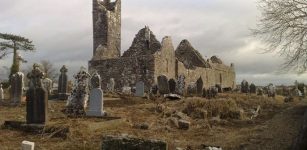 Surprising Discovery Reveals Why Medieval Graves Were Re-Opened – Stealing Was Not The Purpose
Archaeology | May 24, 2017
Surprising Discovery Reveals Why Medieval Graves Were Re-Opened – Stealing Was Not The Purpose
Archaeology | May 24, 2017 -
 Surprising Evidence Of Prehistoric Human Activity In Falkland Islands – Europeans Were Not The First Settlers
Archaeology | Oct 29, 2021
Surprising Evidence Of Prehistoric Human Activity In Falkland Islands – Europeans Were Not The First Settlers
Archaeology | Oct 29, 2021 -
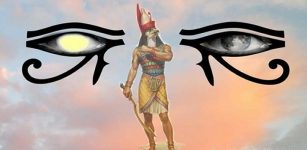 Horus – One Of The Most Important Ancient Egyptian Gods And Symbol Of Rulership and Justice
Egyptian Mythology | Jun 26, 2018
Horus – One Of The Most Important Ancient Egyptian Gods And Symbol Of Rulership and Justice
Egyptian Mythology | Jun 26, 2018 -
 Dura-Europos Roman Shield Created With Ancient Painting Techniques On Wood
Archaeology | Nov 9, 2015
Dura-Europos Roman Shield Created With Ancient Painting Techniques On Wood
Archaeology | Nov 9, 2015 -
 Why Did Stone Age People Cut Off Their Fingers?
Archaeology | Dec 6, 2018
Why Did Stone Age People Cut Off Their Fingers?
Archaeology | Dec 6, 2018 -
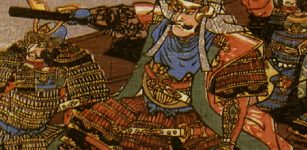 Warrior Uesugi Kenshin And His Nagamaki Special Guards
Featured Stories | Sep 4, 2018
Warrior Uesugi Kenshin And His Nagamaki Special Guards
Featured Stories | Sep 4, 2018 -
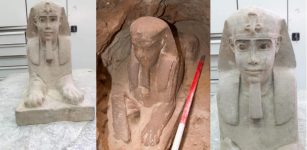 Sandstone Statue Of A Sphinx Discovered In Kom Ombo Temple
Archaeology | Sep 18, 2018
Sandstone Statue Of A Sphinx Discovered In Kom Ombo Temple
Archaeology | Sep 18, 2018 -
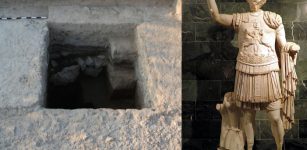 Unfinished Roman Aqueduct Discovered In The Hellenistic Royal City Of Artashat-Artaxata In Ancient Armenia
Archaeology | Nov 16, 2021
Unfinished Roman Aqueduct Discovered In The Hellenistic Royal City Of Artashat-Artaxata In Ancient Armenia
Archaeology | Nov 16, 2021 -
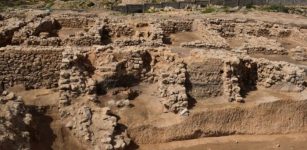 Ancient Greco-Roman Amphora Workshop Discovered In Alexandria, Egypt
Archaeology | Apr 17, 2022
Ancient Greco-Roman Amphora Workshop Discovered In Alexandria, Egypt
Archaeology | Apr 17, 2022 -
 Huge Maya Civilization With Pyramids, Settlements, Ball Courts, Roads And More Discovered By LIDAR In Guatemala
Archaeology | Dec 30, 2022
Huge Maya Civilization With Pyramids, Settlements, Ball Courts, Roads And More Discovered By LIDAR In Guatemala
Archaeology | Dec 30, 2022 -
 Ancient Mud-Brick Roman Ovens And Massive Wall Dated To Egyptian Late Period Unearthed In Luxor
Archaeology | Jun 26, 2020
Ancient Mud-Brick Roman Ovens And Massive Wall Dated To Egyptian Late Period Unearthed In Luxor
Archaeology | Jun 26, 2020 -
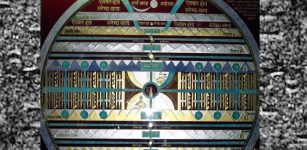 Jambu Tree In Great Cosmogonic Forest Of Sacred Land Of Jambudvipa In Buddhist Mythology
Featured Stories | Nov 2, 2021
Jambu Tree In Great Cosmogonic Forest Of Sacred Land Of Jambudvipa In Buddhist Mythology
Featured Stories | Nov 2, 2021 -
 Strange Mist, Unexplained Vanishings And Other Bizarre Incidents – What Is The Connection?
Featured Stories | Mar 8, 2019
Strange Mist, Unexplained Vanishings And Other Bizarre Incidents – What Is The Connection?
Featured Stories | Mar 8, 2019 -
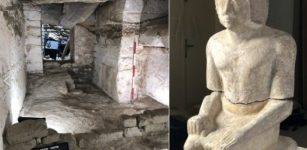 Ancient Tomb Of Exceptional Priest Kaires – The Sole Friend And Keeper Of The Secret Of The Morning House Discovered In Egypt
Archaeology | Oct 9, 2018
Ancient Tomb Of Exceptional Priest Kaires – The Sole Friend And Keeper Of The Secret Of The Morning House Discovered In Egypt
Archaeology | Oct 9, 2018 -
 Strange Story Of Tecumseh’s Comet, Black Sun Prophecy And New Madrid Earthquakes – The Biggest Earthquakes In American History
Featured Stories | Nov 14, 2018
Strange Story Of Tecumseh’s Comet, Black Sun Prophecy And New Madrid Earthquakes – The Biggest Earthquakes In American History
Featured Stories | Nov 14, 2018 -
 Mystery Of The Blue Blood Gods: Why Did They Have A Different Blood And Skin Color?
Featured Stories | Jun 18, 2015
Mystery Of The Blue Blood Gods: Why Did They Have A Different Blood And Skin Color?
Featured Stories | Jun 18, 2015 -
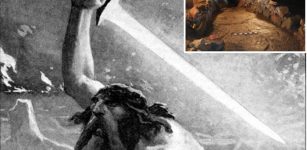 Surtshellir Cave Reveals How Vikings Attempted To Prevent Ragnarök – Doom Of The Gods
Featured Stories | Jul 17, 2023
Surtshellir Cave Reveals How Vikings Attempted To Prevent Ragnarök – Doom Of The Gods
Featured Stories | Jul 17, 2023 -
 Major Discovery Reveals Neanderthals In Italy Engaged In Plant Food Processing
Evolution | Jun 29, 2023
Major Discovery Reveals Neanderthals In Italy Engaged In Plant Food Processing
Evolution | Jun 29, 2023 -
 Deception And Hidden Truth – Ancient Struggle Of The Eagle And Serpent – Part 2
Ancient Symbols | Sep 6, 2019
Deception And Hidden Truth – Ancient Struggle Of The Eagle And Serpent – Part 2
Ancient Symbols | Sep 6, 2019 -
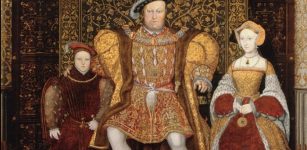 On This Day In History: Henry VIII Ascended The Throne Of England – On Apr 22, 1509
News | Apr 22, 2016
On This Day In History: Henry VIII Ascended The Throne Of England – On Apr 22, 1509
News | Apr 22, 2016

